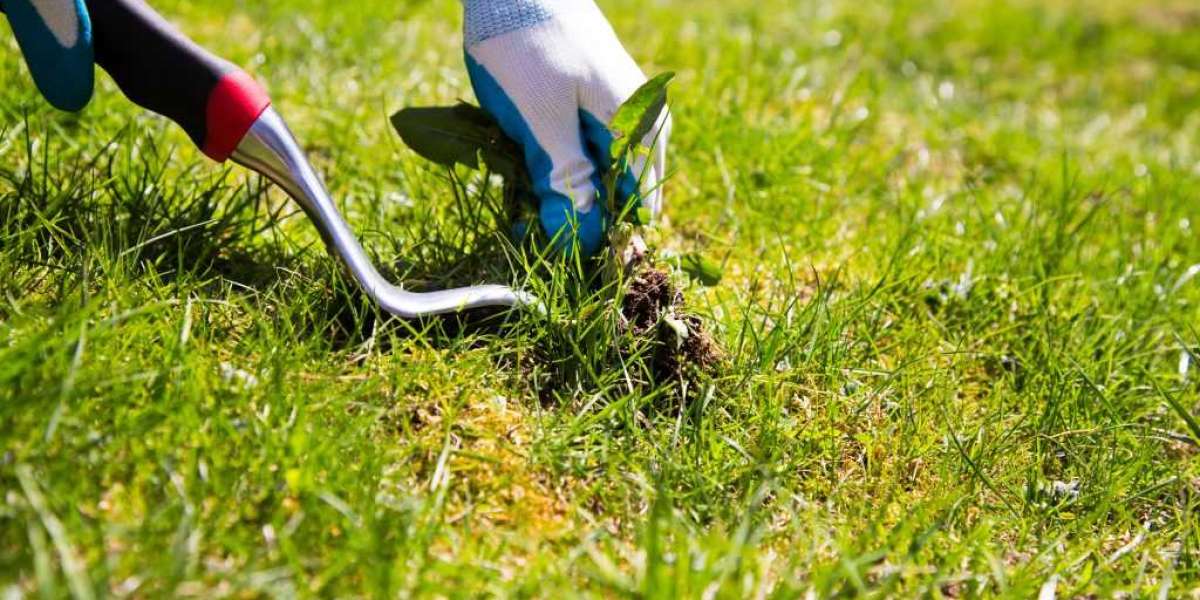A lush, green lawn is the pride of any homeowner, but weeds can quickly ruin the look of your outdoor space. Not only do weeds disrupt the aesthetic appeal of your lawn, but they also compete with grass for essential nutrients, water, and sunlight, leading to an unhealthy lawn. Lawn weed removal is, therefore, a crucial part of lawn care. In this blog, we’ll explore the importance of weed removal, the different types of weeds that may invade your lawn, and effective methods to keep your grass looking healthy and vibrant.
Why is Lawn Weed Removal Important?
Weeds are more than just an eyesore on your lawn—they can significantly harm the overall health of your turf. Here’s why regular weed removal should be a priority for any homeowner:
Weeds Compete for Nutrients and Water: Weeds are aggressive and have deep root systems that steal nutrients and water from your grass. This deprives your lawn of the resources it needs to stay healthy, leading to patchy and weak grass.
Weeds Can Spread Quickly: Most weeds are highly reproductive and can spread rapidly, taking over your entire lawn if not addressed promptly. Without intervention, they can significantly reduce the aesthetic and functional value of your lawn.
Weeds Can Harbor Pests and Diseases: Weeds create hiding spots for pests and insects, including harmful ones like mosquitoes. These pests can damage your lawn and even affect the overall health of your garden.
Aesthetic Appeal: Weeds detract from the beauty of your lawn and garden, making it look unkempt and neglected. Maintaining a weed-free lawn enhances the curb appeal of your property and increases its value.
Common Types of Weeds in Lawns
Understanding the types of weeds that invade lawns is the first step in effective weed removal. Weeds generally fall into two categories: broadleaf weeds and grassy weeds.
- Broadleaf Weeds: These weeds have wide, flat leaves and tend to grow in clumps. Common broadleaf weeds include:
- Dandelions: Easily recognizable by their yellow flowers and fluffy seed heads, dandelions can take over a lawn quickly.
- Clover: Often seen as a lawn “invader,” clover can be difficult to remove, especially in thick lawns.
- Plantain: A broad-leafed weed with a rosette shape, plantains grow close to the ground and can spread if not removed.
- Thistles: These prickly plants can create a serious nuisance, especially in lawns that are not properly maintained.
- Grassy Weeds: These weeds resemble grass and can blend into your lawn. Common grassy weeds include:
- Crabgrass: A summer annual weed that spreads quickly and crowds out desirable grass.
- Foxtail: Another grassy weed that grows in clumps and produces seed heads that can be difficult to remove.
- Nutsedge: Known for its fast-growing, grass-like appearance, nutsedge can be difficult to control and quickly spreads in wet conditions.
Effective Methods for Lawn Weed Removal
Now that you know why weed removal is crucial and the common types of weeds that plague lawns, let's look at the most effective ways to remove them.
1. Manual Weed Removal
For smaller lawns or minor infestations, pulling weeds by hand can be an effective solution. Manual weed removal is best done when the soil is moist, making it easier to pull the weeds along with their roots. Using tools like a weeding fork or a hand weeder can help you reach deep-rooted weeds without disturbing the surrounding grass.
Pro Tip: For stubborn weeds like dandelions, make sure to remove the entire root to prevent regrowth.
2. Mulching
Applying mulch around plants and in garden beds is an effective way to prevent weed growth. Mulch creates a barrier that blocks sunlight from reaching weed seeds, preventing them from germinating. Additionally, mulch helps retain moisture in the soil, which is beneficial for your grass and plants.
3. Herbicides
Herbicides are chemical solutions designed to target and kill weeds while leaving grass and desirable plants unharmed. There are two main types of herbicides:
- Pre-emergent herbicides: These are applied early in the season to prevent weed seeds from germinating. They are most effective against annual weeds like crabgrass.
- Post-emergent herbicides: These are applied after the weeds have already sprouted and are effective against both broadleaf and grassy weeds.
When using herbicides, always follow the manufacturer’s instructions carefully, and be sure to use the right type of herbicide for the specific weeds you're targeting.
Warning: Some herbicides can harm your grass, so be cautious when applying them, especially if you're unsure of which type of weeds are present in your lawn.
4. Aeration
Soil compaction can limit grass growth and encourage weed growth. Aerating your lawn (removing small plugs of soil) improves the soil structure, allowing nutrients, air, and water to reach grass roots more effectively. Aeration also disrupts the growth of weeds like crabgrass, making it harder for them to take root.
5. Fertilization and Lawn Care
A healthy, thick lawn is your best defense against weeds. Weeds struggle to establish themselves in a well-maintained lawn that is properly fertilized, watered, and mowed. Regular lawn care practices, such as:
- Mowing your lawn at the right height: Keep your grass at the appropriate height for your grass type to promote healthy growth and crowd out weeds.
- Proper watering: Overwatering or underwatering your lawn can stress grass and encourage weed growth. Water deeply and infrequently to encourage deep-rooted grass.
- Fertilizing regularly: Proper fertilization gives grass the nutrients it needs to outcompete weeds for resources.
By keeping your lawn healthy and robust, you will naturally reduce the chances of weed growth.
6. Overseeding
If your lawn has developed bare patches due to weed removal or other issues, overseeding is a good solution. By spreading grass seed over the existing lawn, you help fill in empty areas and improve the overall density of the grass. A denser lawn is more resilient to weed infestations, as the grass will crowd out weeds and prevent them from taking root.
Preventing Future Weed Growth
Weed prevention is just as important as weed removal. Here are a few strategies to keep your lawn weed-free:
- Maintain lawn health: Proper fertilization, watering, and mowing will ensure your lawn remains thick and strong.
- Apply pre-emergent herbicides: Use pre-emergent herbicides in the early spring to prevent weed seeds from germinating.
- Control irrigation: Avoid over-watering, as damp conditions can promote weed growth.
Conclusion
Lawn weed removal is an essential aspect of maintaining a healthy and attractive lawn. Regularly removing weeds and taking steps to prevent future growth will not only improve the appearance of your lawn but also help it thrive. Whether you opt for manual removal, herbicides, or professional lawn care services, the key is to stay proactive and consistent with your weed management strategy.
A lush, green, weed-free lawn enhances your home’s curb appeal and creates a pleasant outdoor space for family and friends to enjoy. By keeping weeds at bay and maintaining your lawn properly, you ensure that your lawn remains healthy and beautiful for years to come.
If you're looking for expert help with lawn weed removal, don’t hesitate to contact a professional lawn care service today!







